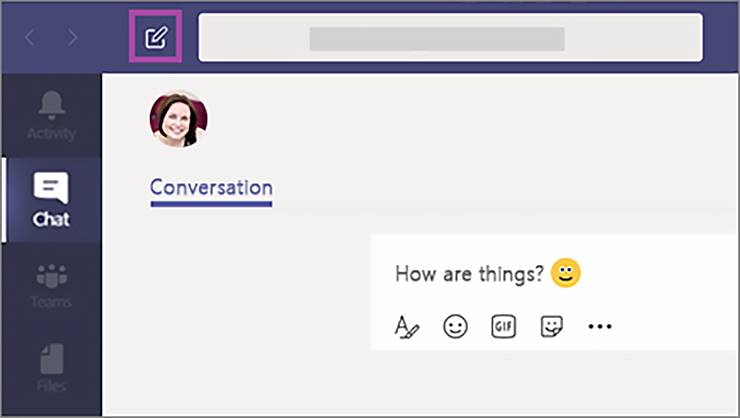How to Pick the Best Way to Communicate
Zoom? Call? Chat? Email? Know the ideal platform for your communication need

Under normal circumstances, Rachel Coleman and her team at the Duke Career Center benefitted from communication that flowed easily.
From face-to-face consultations with students, to quick chats with co-workers around their Smith Warehouse offices, Coleman’s group had no trouble keeping in touch.
Over the past two months, as Coleman and many other Duke staff and faculty have been working remotely, how those conversations happen changed. Most meetings with students happen by video conference. Conversations with coworkers and collaborators moved to chat, email or phone calls.
With so many communication avenues available, Coleman’s group, like many teams across Duke, has been trying to figure out which method works best for each situation.
“There’s a lot of trial and error with figuring out what works for your team,” said Coleman, the Duke Career Center’s associate director for Graduate Student Career Services. “But I think we’ve been pretty open about exploring things and testing them out and seeing what works for our uses. It’s been interesting.”
We consulted with Duke employees and experts to learn how they pick the right platforms for their conversations.
The value of video
One of the biggest changes in how many Duke employees work now is the increased prominence of video conferencing tools such as Zoom and WebEx. These technologies have become the go-to method for staff meetings.
 “If we’re trying to replicate the in-person experience as much as possible, having that face-to-face connection is important,” Coleman said.
“If we’re trying to replicate the in-person experience as much as possible, having that face-to-face connection is important,” Coleman said.
Assistant Director of Leadership and Professional Development for Duke Learning & Organization Development Joy Birmingham said that when it comes to one-on-one communication, determining whether to schedule a video conference versus a phone call comes down to emotion.
If a conversation is a simple transfer of information, phone calls are fine. But if there’s a need to gauge reactions or discuss difficult or challenging topics, the video element can make a conversation more full.
“We only get so much communication from the words we use, the rest is body language,” Birmingham said. “Video conferences aren’t the same as being face-to-face, but it’s as close as we’re going to get.”
Email has its place
Kim Garcia, senior director for development special events for University Development, knows plenty about finding creative technological answers for the challenge of working remotely. Garcia was part of a team that used Zoom to put together a Duke-wide alumni and development staff meeting in April that included university and health system leaders and around 400 participants.
 But for important parts of that meeting’s planning and organization, Garcia and her team leaned on email, a tried-and-true communication technology.
But for important parts of that meeting’s planning and organization, Garcia and her team leaned on email, a tried-and-true communication technology.
“In our office, we have an email culture,” Garcia said. “For a lot of us, it’s good to have documentation and a way to easily find responses to questions. Email does that.”
Birmingham said that while the past few months have shown the value of a diverse list of communication options, there are many functions – such as sending detailed instructions or assignments, or relaying information that needs a few sentences to explain – where email is remains the best option.
“If a message is less than three sentences, chat is a good forum for what you need to say,” Birmingham said. “But if you want to know something that doesn’t need a quick yes or no answer, then I’d send an email.”
Birmingham also said that email is best used a way to exchange information. If something can’t sorted out in just a few emails, you should probably pick up the phone.
Make things quick and easy with chats
Lisa Dilts, senior director for reunions and special events for the Duke Alumni Association, understands that email has its time and place. But with flooded inboxes, time-consuming responses and key information that can get buried, email can be cumbersome, too.
 “You can end up being ruled by your email inbox,” Dilts said.
“You can end up being ruled by your email inbox,” Dilts said.
That’s one reason Dilts is a fan of chat. Whether on Jabber or Microsoft Teams, a quick question can get a quick answer and nobody’s email inbox gets cluttered.
“If there’s something that needs a quick yay or nay, chat is great for that because it’s very fluid and you don’t have to track responses,” Dilts said. “It’s just a quick check-in.”
Through the Duke Office of Information Technology, Duke employees can take advantage of several different programs that offer chat, including Microsoft Teams and Jabber.
Change it up with a phone call
Joe Gonzalez’ use of Zoom video conferencing has increased sharply since working from home. The Assistant Vice President of Student Affairs and Dean for Residential Life went from using Zoom sparingly prior to the threat of COVID-19, to now having as many as six video meetings a day.
 But recently, he’s opted to shift some conversations back to the less flashy method of phone calls.
But recently, he’s opted to shift some conversations back to the less flashy method of phone calls.
“I think staring at the screen for so long each day wears on you, so this week I’ve incorporated more phone calls for one-on-ones, so I think that’s been a good adjustment,” Gonzalez said.
Gonzalez said that by talking on the phone, he breaks up the monotony of staring at a computer and gets up from his desk and moves.
Coleman at the Duke Career Center said she gives her colleagues the option of picking Zoom or a phone call – which can be made through Microsoft Teams – for their regular one-on-one meetings.
“If they’re exhausted from being on video conferences all day, we can do a phone chat,” Coleman said. “The nice thing about that is that sometimes people will do a walking meeting, which you can do over the phone. They can get outside and get some movement.”
Help share the proactive and extensive work being done by all Duke community members during the COVID-19 outbreak. Send ideas, shout-outs and photographs here or write us at working@duke.edu.